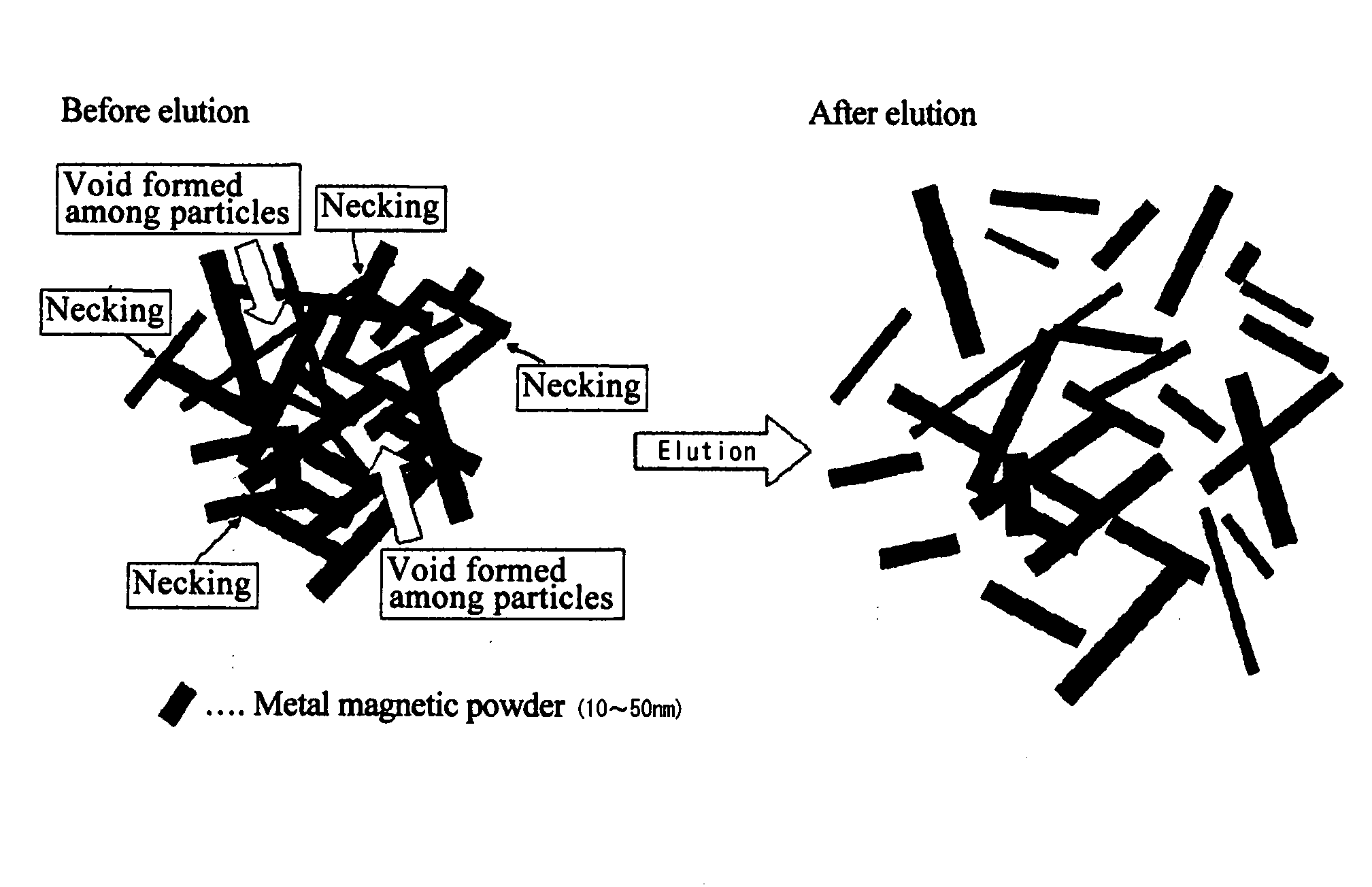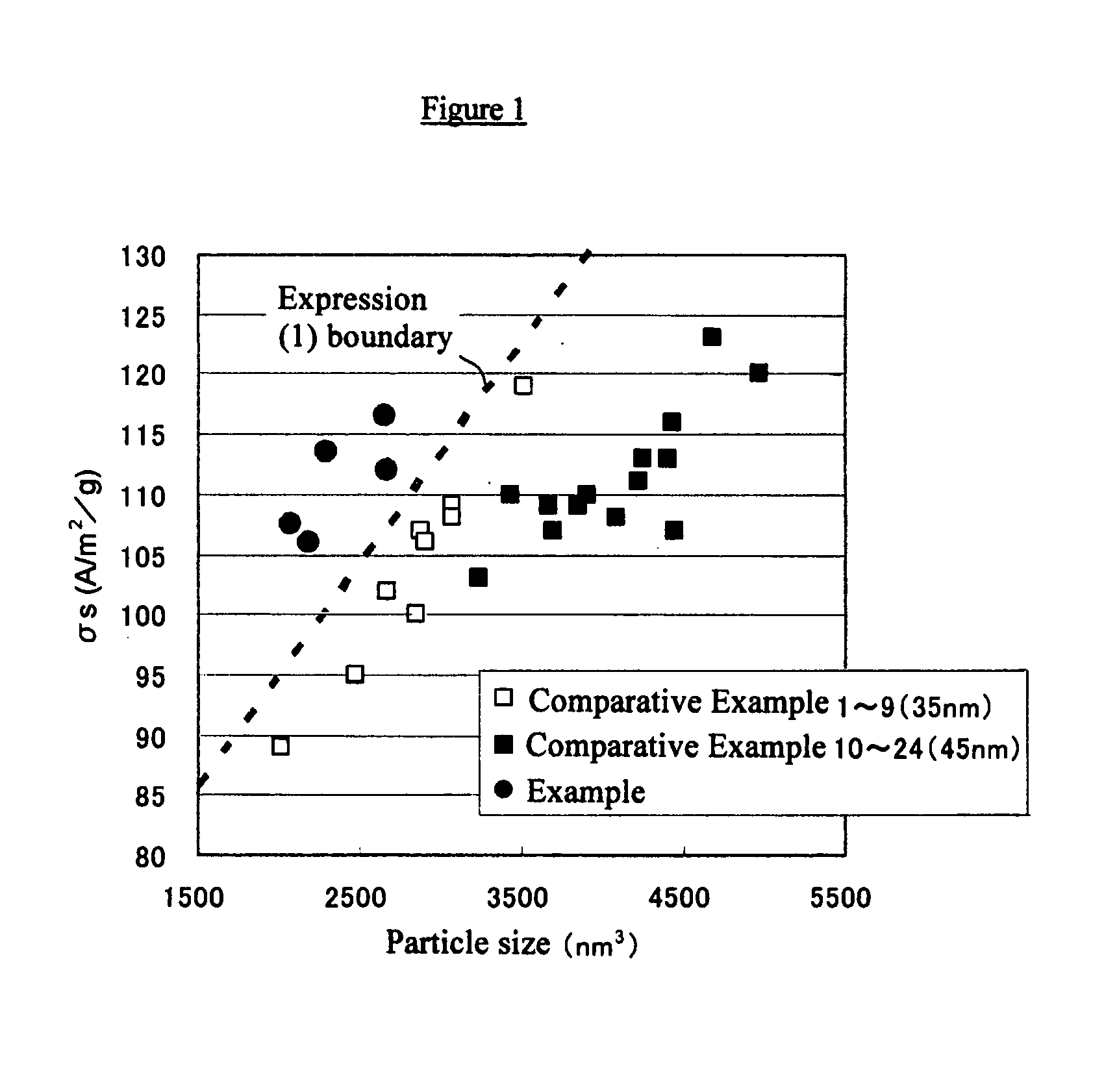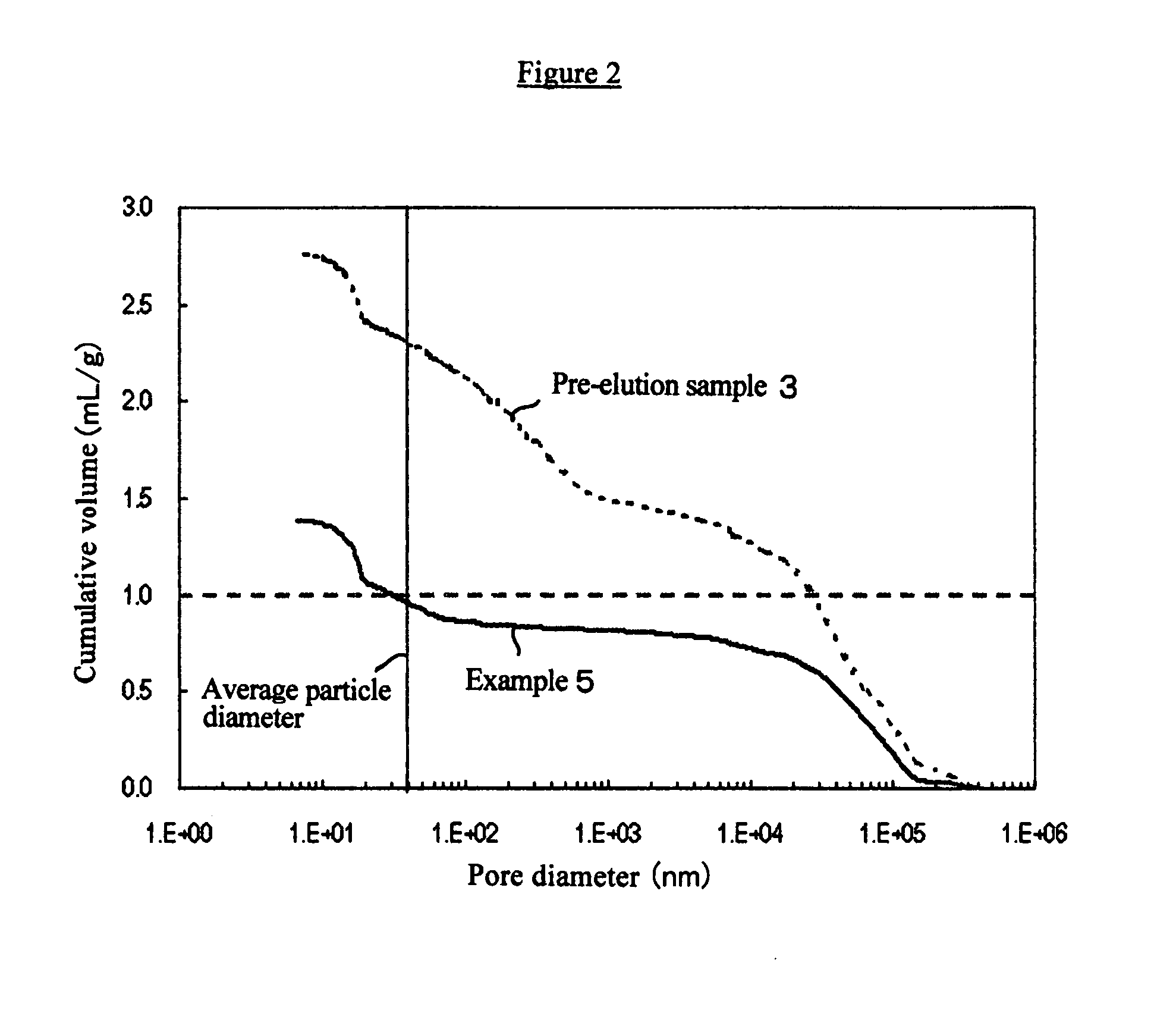Magnetic metal powder suitable for use in magnetic recording media and method of manufacturing the powder
a magnetic recording media and metal powder technology, applied in the field of ferrromagnetic metal powder, can solve the problems of reducing the axial ratio owing to particle shape deterioration, increasing the likelihood of inter-particle sintering, and degrading saturation magnetization, so as to reduce the amount of added sintering inhibitor and reduce the thickness of the oxide layer
- Summary
- Abstract
- Description
- Claims
- Application Information
AI Technical Summary
Benefits of technology
Problems solved by technology
Method used
Image
Examples
example 1
[0087]A Post-reduction Intermediate Product was produced by a manufacturing method like that of Comparative Example 1. The product obtained by subjecting the Post-reduction Intermediate Product to the “oxidation process” set out in Comparative Example 1 was designated Pre-elution Sample 1. The powder properties and magnetic properties of the Pre-elution Sample 1 were determined by the same methods as in Comparative Example 1. The results are shown in Table 2 (along with those for Pre-elution Samples 2 and 3 set out below).
[0088]The metal magnetic powder before the Pre-elution Sample 1 was oxidized, i.e., the Post-reduction Intermediate Product, was subjected to elution in the following manner.
[0089]A mixture containing 0.05 mol / L of disodium tartrate as complexing agent and 0.1 mol / L of ammonium sulfate as buffer was adjusted to pH 9 with NH3 to prepare a processing solution. 10 g of the Pre-elution Sample 1 metal magnetic powder was cast into the processing solution, which was main...
example 2
[0102]The metal magnetic powder before the Pre-elution Sample 1 was oxidized, i.e., the Post-reduction Intermediate Product, was subjected to elution under the following conditions.
[0103]A mixture containing 0.05 mol / L of sodium citrate as complexing agent and 0.1 mol / L of ammonium sulfate as buffer was adjusted to pH 9 with NH3 to prepare a processing solution. 10 g of the Pre-elution Sample 1 metal magnetic powder was cast into the processing solution, which was maintained at 30° C., followed by addition of hydrazine as reducing agent to a concentration of 4 mol / L. The result was ripened at 30° C. for 30 min under stirring to obtain a slurry. The slurry was subjected to solid-liquid separation and the properties of the metal magnetic powder were examined in the manner of Example 1.
example 3
[0104]A Post-reduction Intermediate Product differing in composition from the Pre-elution Sample 1 was produced by a method similar to that described in Comparative Example 1. The result was subjected to the “oxidation process” of Comparative Example 1 to obtain a “Pre-elution Sample 2.”
[0105]The metal magnetic powder before the Pre-elution Sample 2 was oxidized, i.e., the Post-reduction Intermediate Product, was subjected to elution under the conditions of Example 1. The slurry was subjected to solid-liquid separation and the properties of the metal magnetic powder were examined in the manner of Example 1.
PUM
| Property | Measurement | Unit |
|---|---|---|
| particle volume | aaaaa | aaaaa |
| humidity | aaaaa | aaaaa |
| RH | aaaaa | aaaaa |
Abstract
Description
Claims
Application Information
 Login to View More
Login to View More - R&D
- Intellectual Property
- Life Sciences
- Materials
- Tech Scout
- Unparalleled Data Quality
- Higher Quality Content
- 60% Fewer Hallucinations
Browse by: Latest US Patents, China's latest patents, Technical Efficacy Thesaurus, Application Domain, Technology Topic, Popular Technical Reports.
© 2025 PatSnap. All rights reserved.Legal|Privacy policy|Modern Slavery Act Transparency Statement|Sitemap|About US| Contact US: help@patsnap.com



